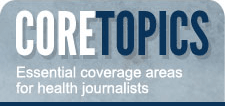In 2000, then-Surgeon General David Satcher called national attention to “a silent epidemic” of oral diseases, afflicting America’s most vulnerable citizens – poor children, the elderly and racial and ethnic minorities.
The crisis continues, Satcher said last week at a conference hosted by the Morehouse School of Medicine in Atlanta.
Under the Patient Protection and Affordable Care Act, more than 5 million additional children will become eligible for dental benefits. But who will care for them? As it stands, the nation’s 30 million Medicaid children are already entitled to care, but the majority don’t get in to see dentists.
“We now have an opportunity to dramatically increase coverage,” said Satcher, now director of The Satcher Health Leadership Institute at Morehouse School of Medicine. “But adding dental benefits will not translate into access to care if we do not have providers in place to offer treatment.”
Satcher went on to a major hot-button issue in the world of oral health care: the question of midlevel providers.
The problem is this: More than 49 million Americans are living in areas with a shortage of oral health care providers. It would take nearly 10,000 additional dental practitioners to meet the current needs, according to the U.S. Department of Health and Human Services Health Resources and Services Administration. The shortage of dental providers disproportionately affects people living in poor and rural areas.
With the Affordable Care Act, “We now have an opportunity to improve access to dental health services,” noted Satcher. “But how do we put in place a health care system that meets the needs of all?”
Satcher spoke out for pilot programs such as those now being sponsored by the federal government and the W.K. Kellogg Foundation targeted at exploring alternative provider models such as dental therapists, who, with two or more years of intensive technical training, provide a range of services including preventive and restorative procedures and simple extractions.
The therapists work under the general, not direct, supervision of dentists and have been serving in other countries for decades. In 2005, dental health aide therapists, also known as DHATs, started working on tribal lands in Alaska as part of a longstanding federally authorized program that trains residents of Alaska Native tribal villages to provide basic care to their neighbors. In 2009, Minnesota became the first U.S. state to approve a law allowing such midlevel dental workers to practice.
“I think we need more dentists and I think we need more professionals who are not dentists but who can contribute to oral health services,” Satcher said.
Not everyone believes such midlevel providers are the answer, though. The American Dental Association (ADA) staunchly opposes them, arguing they are not qualified to perform procedures considered irreversible or “surgical” such as drilling or extracting teeth.
And on July 25, the ADA released its newest reports (PDF) challenging the economic viability and effectiveness of such midlevel providers in five states that are considering them: Connecticut, Kansas, Maine, New Hampshire and Washington.
“Lawmakers and public health authorities should not rush to create midlevel dental providers who may be unable to fulfill their purpose of reducing oral health disparities,” cautioned ADA President William Calnon.
The executive director of a clinic in Minnesota was quick to dispute such findings.
Sarah Wovcha told DrBicuspid.com she has just hired a second therapist because she has been so impressed with the productivity of the therapist that is already working at her nonprofit clinic, Children’s Dental Services in Minneapolis. “I was very pleased and not at all surprised because she’s well-trained,” said Wovcha.
And so the debate continues.
 Mary Otto, AHCJ’s topic leader on oral health is writing blog posts, editing tip sheets and articles and gathering resources to help our members cover oral health care.
Mary Otto, AHCJ’s topic leader on oral health is writing blog posts, editing tip sheets and articles and gathering resources to help our members cover oral health care.
If you have questions or suggestions for future resources on the topic, please send them to mary@healthjournalism.org.
Related resources
Moves to address access to dental care
Tip Sheets
Tips on covering dental health care and access to care
Newsworthy issues in oral health (Shelly Gehshan presentation)
Dental Therapists — The Newest Members of the Oral Health Care Team (Michael Helgeson presentation)
Report: Improving Access to Oral Health Care for Vulnerable and Underserved Populations
Award winner: The Dental Epidemic of Alameda County









